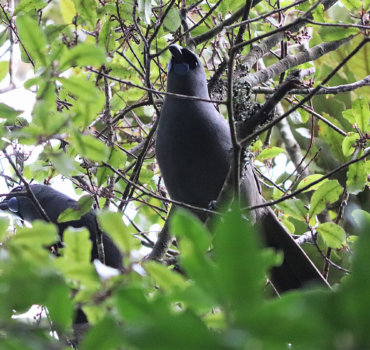
A pair of kōkako at Sanctuary Mountain Maungatautari.

A pair of kōkako at Sanctuary Mountain Maungatautari.
Numbers of one of New Zealand’s great songbirds have doubled at the country’s biggest inland sanctuary.
The latest kōkako census at Sanctuary Mountain Maungatautari revealed a tally of 47 territorial pairs and seven single birds.
That has caused some excitement on the maunga as the numbers have more than doubled in just a couple of years.
Species co-ordinator Janelle Ward said the last census in 2018 recorded 19 pairs and six singles.
“Many sub-adult kōkako were also observed but not included in the official count, as young birds are highly mobile.”
She said the team also confirmed that an additional 11 banded kōkako had established a territory with a mate, including several birds that had not been seen since their release in 2015.
“That brings our founder count to 30 birds and means that a top-up translocation is still required in either 2021 or 2022. Forty are recommended for healthy genetic diversity.”
The census was not completed last year due to a funding shortfall. Janelle said news that they had been successful this year for a DOC Conservation Fund bid to conduct the census in 2020 had been welcomed. It also provided some volunteer opportunities for the bird survey team.
Amanda Rogers, one of the team involved in the census, said the numbers revealed represent a growth rate of kōkako higher than any other mainland site.
“While this is somewhat expected in a predator-free environment, most importantly it is indicative of a high level of recruitment (75 percent) of translocated kōkako, with large clutch sizes and/or double-clutching.
“It is wonderful to know that the kōkako have a thriving and rapidly increasing population at Maungatautari.”
The nzbirdsonline website notes “with their extraordinary haunting song, and obscure evolutionary relationships to other birds, kokako evoke the forests of ancient New Zealand/Aotearoa perhaps more than any other species”.
It says the population of North Island kōkako increased from about 330 pairs in 1999 to almost 1600 in 2017. The birds are poor fliers are their numbers were decimated by introduced mammals.
There is debate over whether or not a South Island kōkako, which has an orange wattle, is extinct.








